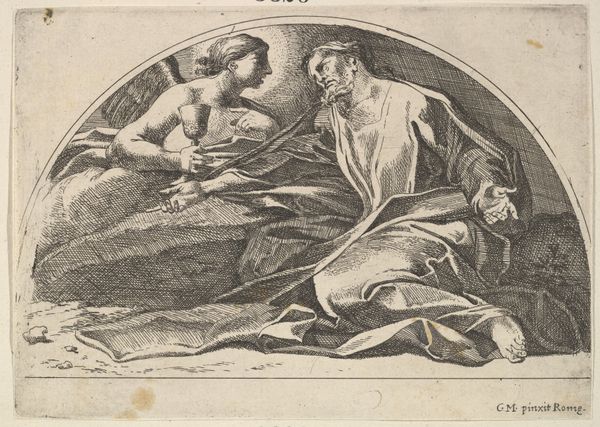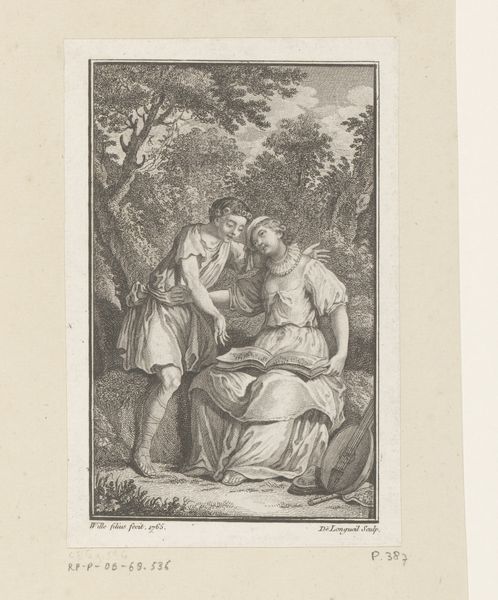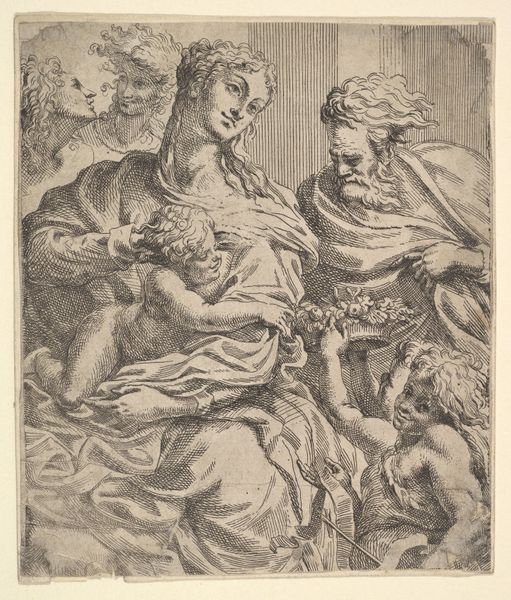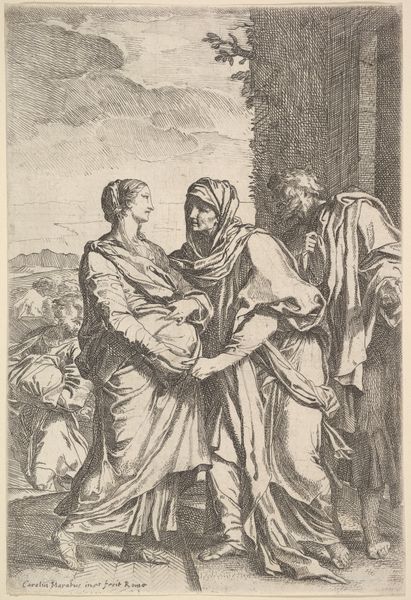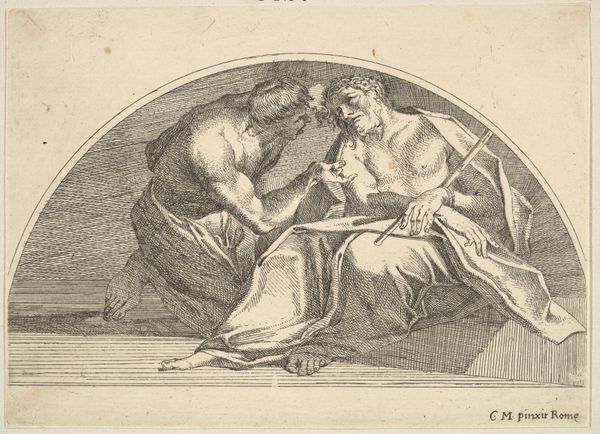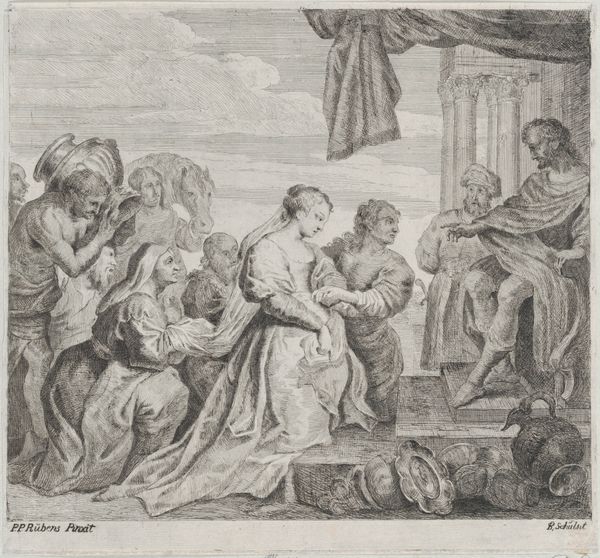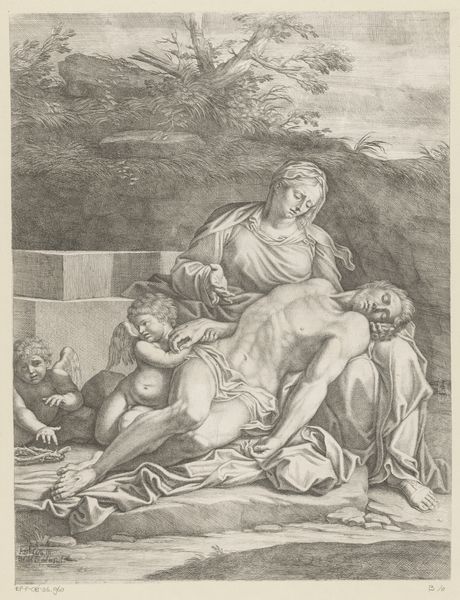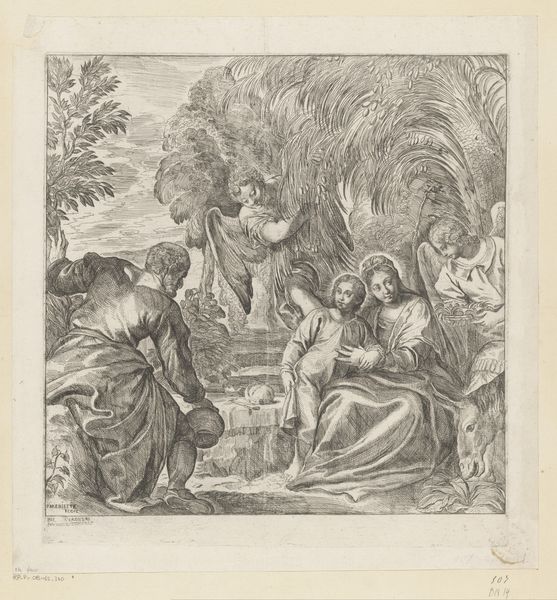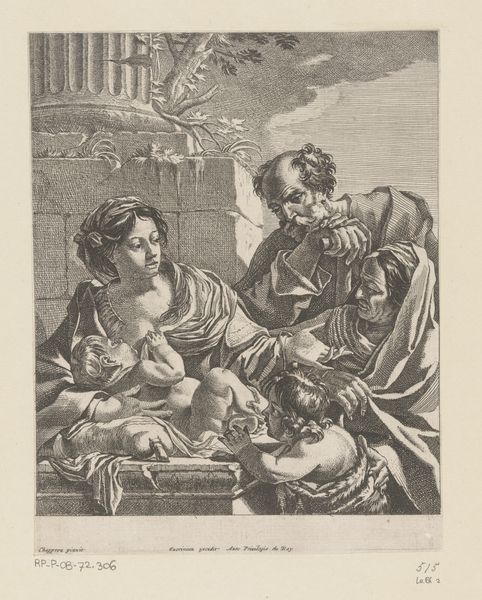
print, engraving
#
portrait
#
baroque
# print
#
old engraving style
#
figuration
#
line
#
portrait drawing
#
history-painting
#
engraving
Dimensions: height 150 mm, width 250 mm
Copyright: Rijks Museum: Open Domain
Curator: This engraving, likely created between 1648 and 1687, is entitled "Christus kroont de Maagd Maria," depicting Christ crowning the Virgin Mary. It’s attributed to Francesco Rosa. The starkness of the line work makes it striking, wouldn't you agree? Editor: Absolutely, the formal arrangement feels both intimate and monumental despite its obvious limitations. The stark contrast immediately directs the viewer’s eye toward the focal point—their joined hands and the crowning. There’s an intriguing sense of pious grace. Curator: Observe how the composition relies heavily on linear perspective, drawing us into the sacred scene. The delicate hatching and cross-hatching create tonal variations that are quite remarkable given the limitations inherent in printmaking. I am especially intrigued by how form and function intertwine within the stylistic framework, using lines and angles to enhance visual meaning. Editor: Indeed. The crowning, a potent symbol of Mary’s Queenship of Heaven, has a long tradition, reinforcing both her sanctity and her crucial role within the Christian narrative. Look closer, one can find subtle yet emotionally loaded details, particularly within facial expressions and gestures; their upward gazes indicate reverence. Note how the composition of triangular shapes, beginning with the space above, is visually balanced by the drape of their clothing. This arrangement offers viewers spiritual assurance about accessing divine mysteries. Curator: That’s precisely the brilliance of the engraving; the balance, as you noted, isn't just representational; it speaks to an inherent stability, an order of things. There is a conceptual rigor in how this order has been realized by careful use of positive and negative space to amplify our cognitive perception. Editor: Moreover, notice how it subtly reinforces gendered expectations. While Christ actively crowns Mary, she responds with subdued humility—a model for female virtue. This scene and its implied symbolism create layers upon layers within the work. The implied message clearly suggests this is more than simply the crowning event, and, moreover, it's very gender specific. Curator: True, true. It’s a potent reminder that we should scrutinize even those aspects seemingly subtle on first encounter because the formal mechanics—balance, lines—serve particular socio-historical purposes in conjunction with culturally specific subject matter. Editor: So true! The cultural meaning woven through the delicate linework—quite profound, truly. Curator: Agreed! What a study of line, composition and cultural suggestion this has been!
Comments
No comments
Be the first to comment and join the conversation on the ultimate creative platform.
